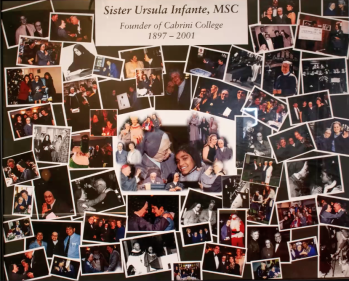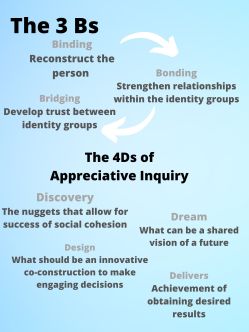This spring semester, the Wolfington Center at Cabrini chose “Peacebuilding; Restoring Relationships and Communities” as this year’s theme for their American Catholic Church lecture series. It is hoped to shed light on the intense divisions that are visible in our world today.
“Our differences, which are normally most often manipulated in order to keep us divided,” the Peacebuilding and Justice Adviser for Catholic Relief Services (CRS) for Africa said.
Jean Baptise Talla was the keynote speaker, as he embodies the Cabrini legacy of making God’s love visible in the world through his justice work. The lecture honors the birthday of Cabrini’s founder, Sister Ursula Infante and was given through a Zoom meeting on Thursday, March 4, at 4:30 p.m.

Talla shared stories and key insights from his work, facilitating hundreds of peace building workshops dealing with various amounts of disputes.
CRS is a non-governmental organization that engages Catholics to live their faith in unity with the poor and people who are suffering across the world. CRS is motivated by the example of Jesus Christ to ease suffering, provide development assistance, and foster charity and justice.
Over the course of the years, CRS has developed a strong peace building program. CRS has the capacity to provide not only humanitarian support but the ability to support people to rebuild broken relationships.
Peace building is a long-term process that can help groups, organizations and communities that are either in crisis or facing lesser challenges to consider their disagreements and disputes, in order to find common ground and envision a future without violence.
Amy Kodrich, senior digital communications and social media major, attended the lecture and was left with resonating thoughts. “Peacebuilding is an ongoing process of strengthening relationships and restoring communities. As a society, we need to ‘overcome what prevents us from giving ourselves’ meaning, why don’t we accept others, why do we question others, why do we create conflict with others?” she said.
Kodrich said that the first step is to be aware of others’ differences. Not recognizing other differences can only cause more conflict and staying narrow-minded is part of the issue, especially in the United States today.
Talla’s contribution to this lecture was sharing stories of his peace building journey in Africa. He shared four stories with the attendees and explained how they boosted his commitment to peace building.
One of those stories resonated with Kodrich. “The story he told of when he feared his roommate who was Bassa. He was brought up scared of that group and scared he would be killed. On the flip side, his roommate as well was told the same thing about his group,” she said.
From his experiences, Talla said that he has learned that our fear and division of others is mostly based on what people say and hear.
After sharing his stories he explains the key lessons he has learned through his journey.
“Peacebuilding is an ongoing process, and because it is an ongoing process, we need to overcome what prevents us from giving ourselves if we want to engage in peace building. And during my journey I was inspired by the 3B/4D approach to rebuild broken relationships between society,” Talla said.
Talla mentioned what holds us from giving ourselves and being open to this process; narcissism, victimhood, pessimism, fear, single identity narrative and tribalism. Possessing one of these characteristics needs to be overcome before being able to participate in this process.
“We believe that conflict is natural, conflict is normal and that conflict is neutral,” Talla said. However, when that conflict begins to involve violence, it is important to have a positive approach to have an opportunity to restore relationships among people.
The techniques used in the peace building process is the 3B approach that includes binding, bonding and bridging. The process will also layer the 4A Appreciative Inquiry approach that includes discover, dream, design and deliver.

Jean Baptise Talla ended his presentation reciting Pope Francis’ prayer of the Holy Spirit, Memory of God. Attendees left feeling inspired by the efforts made of peace building and the hope for future unity within countries, especially the United States.
A final question raised by Dr. Ray Ward, director of the Wolfington Center, was how the United States can bring peace building here and what that would look like since conflicting groups are very distant.
Talla’s response was that if there was a possibility of gathering key people from each group to go through the process, the key people would eventually turn into more people. He has found that when people go through the peace building process, they often change their lenses. “We are not the ones making peace for people, we are just helping people make peace by themselves,” Talla said.
Talla exited with a final piece of advice. “If you don’t pay attention, manipulation by the media even though your country [United States] has a strong constitution, it can bring violence to people.”


